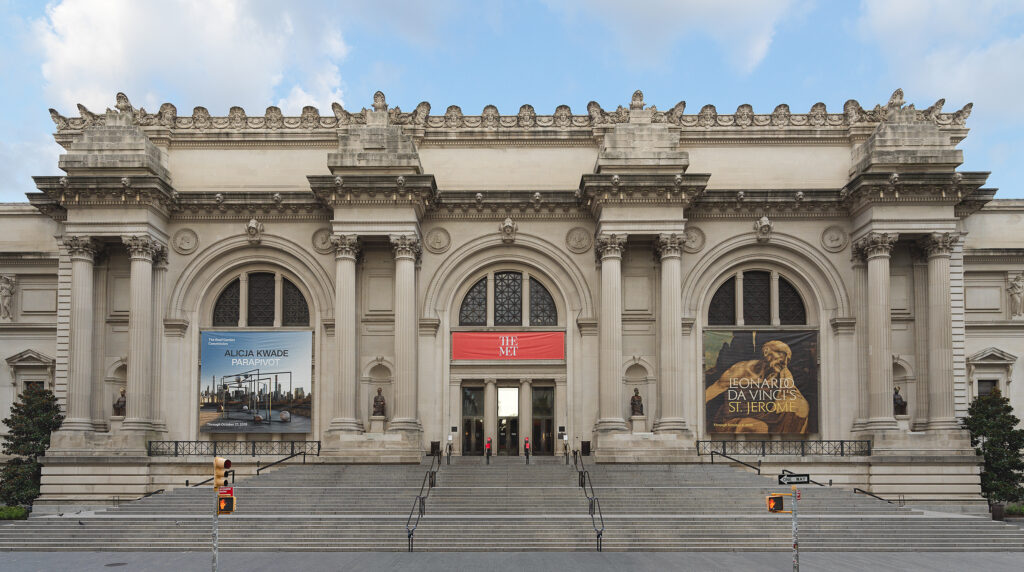The Met Announces the Repatriation of 3 Stolen Artifacts to Iraq

By: Katie Beason / Arab American Contributing Writer
This May, the Metropolitan Museum of Art announced that the institution is returning three artifacts stolen from Iraq to the custody of the Iraqi people. This announcement came in partnership with the Manhattan District Attorney’s Antiquities Trafficking Unit, which included these three Iraqi artefacts amongst the more than a hundred artefacts trafficked by a single, prolific arts dealer, Robin Symes.
The works include a Sumerian vessel and two Babylonian ceramic sculptures depicting a male and a female head. According to a press release from The Met, the Cultural Property Initiative “initiated the repatriation of a third-millennium BCE Sumerian sculpture to the Republic of Iraq in 2024, after provenance research by Met scholars established that the work rightfully belongs to Iraq.”
The repatriation follows the debut of The Met’s Cultural Property Initiative, established in response to growing international support for the return of the world’s artefacts to their countries of provenance. “The Met is committed to the responsible collecting of art and the shared stewardship of the world’s cultural heritage and has made significant investments in accelerating the proactive research of our collection,” said The Met CEO Max Hollein.
“The Museum is grateful for our ongoing conversations with Iraq regarding future collaborative endeavours, and we look forward to working together to advance our shared dedication to fostering knowledge and appreciation of Iraqi art and culture.”
The First Artefact: The Vessel
The first of the artefacts is the vessel supported by two rams, a gypsum alabaster container for oil or perfume of Sumerian provenance, dating to 2600-2500 BCE, according to The Met. ARTNews correspondent Karen K. Ho reported that the Switzerland-based antiquities dealer-trafficker Nicolas Koutoulakis first brought the vessel to the Met in 1956, claiming that it had been found near Ur, the ancient Mesopotamian city in modern-day Iraq.
Before permanently entering The Met’s custodianship in 1989, the vessel had been passed between multiple private collectors and dealers, including infamous arts trafficker Robin Symes. As a part of the Artefacts Trafficking Unit’s (ATU) investigation, the vessel was seized in early 2025 from The Met.
The Second Artefact: The Head of a Female
The second artefact is the ceramic bust of a female, dated between 2000-1600 BCE in Southern Mesopotamia. The head is hollow, sporting intricate plaits and a small smile. According to The Met, there are visible “seven bands around her neck,” which “represent a multi-strand necklace.”
It is believed that the figure was once painted and was a part of a larger figure, as it would align with trends in ancient Iraq and Iran. According to The Met, “Several terracotta heads and busts are known from both ancient Iraq and Iran in the early second millennium B.C.
It seems likely that many of these terracottas were originally part of a larger, perhaps composite, full-body representation. Like this figure [the head of a female], they often have attentive expressions, and some are shown with clasped hands… we do have evidence for various clay figures that served as temple guardians.”
The Third Artefact: The Head of a Male
Lastly, the final artefact is the head of a male figure, not unlike its female counterpart. It boasts a similar provenance of 2000-1600 BCE in Southern Mesopotamia, though it should be noted, all history provided by dealers about once trafficked artefacts should be deemed suspect, as they may have wrong information or may supply mistruths to protect themselves from culpability.
These two sculptures for example are believed to have possibly been looted from Isin, an archaeological site in central Iraq, in the 1960s, before being smuggled to Symes in London in 1971. With this history, it is difficult to confirm history or location.
The Man Behind the Theft
The ATU’s investigation has focused on Symes in particular, who passed away in 2023, due to his prolific presence in the Western museum scene. The unit has seized 135 antiquites, valued at $58 million, which Symes trafficked in and through Manhattan alone, but Symes’s career has included tens of thousands of stolen artefacts, many of them looted during conflicts in the Middle East and the Mediterranean.
It needs to be acknowledged, however, that the ATU has been quicker to return artefacts to countries like Greece and Italy (which have received 351 and 750 artefacts respectively) than Yemen or Libya, for example, which have seen return artefacts numbered in the single digits. This repatriation represents a small part of a greater trend with the repatriation of artefacts, in which claims about the artefacts’ safety or their legitimate provenance prevent their return to their countries of origin.
Debates to Return the Artefacts
In Iraq, for example, there are debates about whether modern-day Iraq can claim custody over Mesopotamian heritage, or if those cultures are so ancient that their material remains belong to the world. Many of these arguments are rooted in the misguided belief that countries like Iraq are unable to properly store the artefacts in their care, due to budget constraints and regional conflicts.
Fortunately, these three artefacts represent a step in the right direction towards the global return of artefacts, particularly from former colonial powers, to countries with the right to dignity and the protection of their cultural heritage.
H. E. Nazar Al Khirullah, Ambassador of the Republic of Iraq to the US, described programs like the ATU as “instrumental” in the recovery of his country’s looted material heritage. “We also appreciate our strong and ongoing partnership with The Met,” he said, ‘whose commitment to cultural preservation complements our shared mission to safeguard the world’s antiquities.”
Want more articles like this? Sign up for our e-newsletter!
Check out our blog here!








